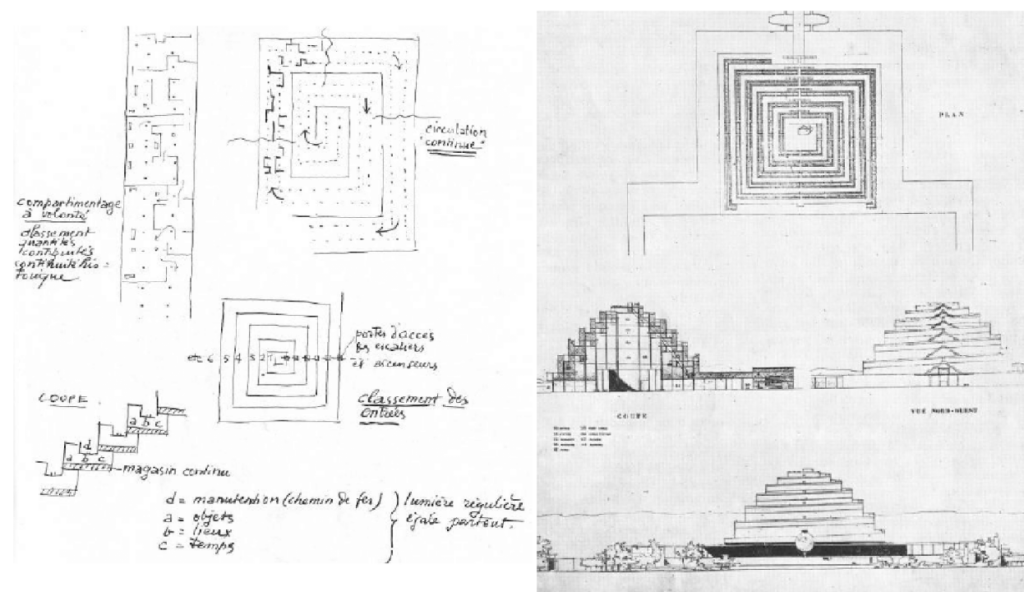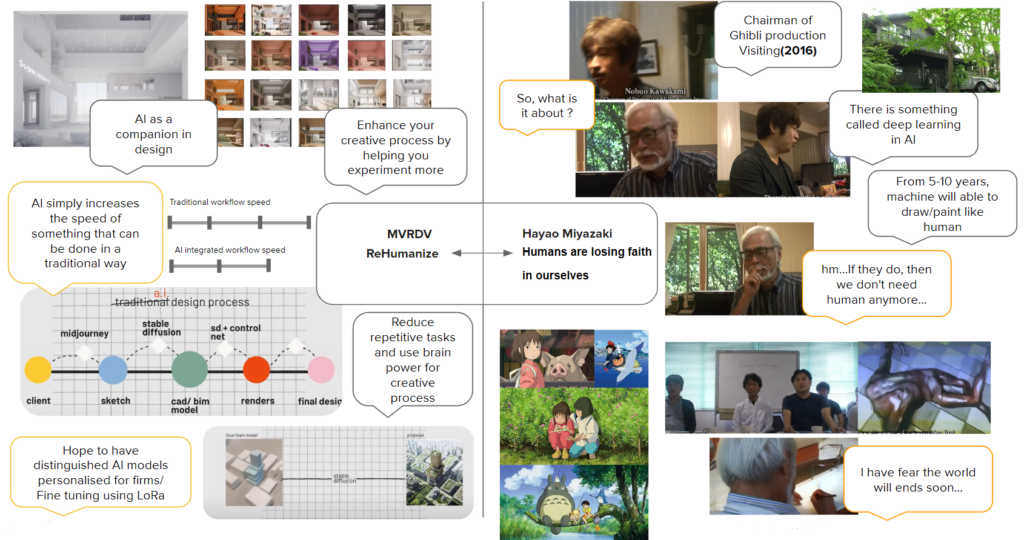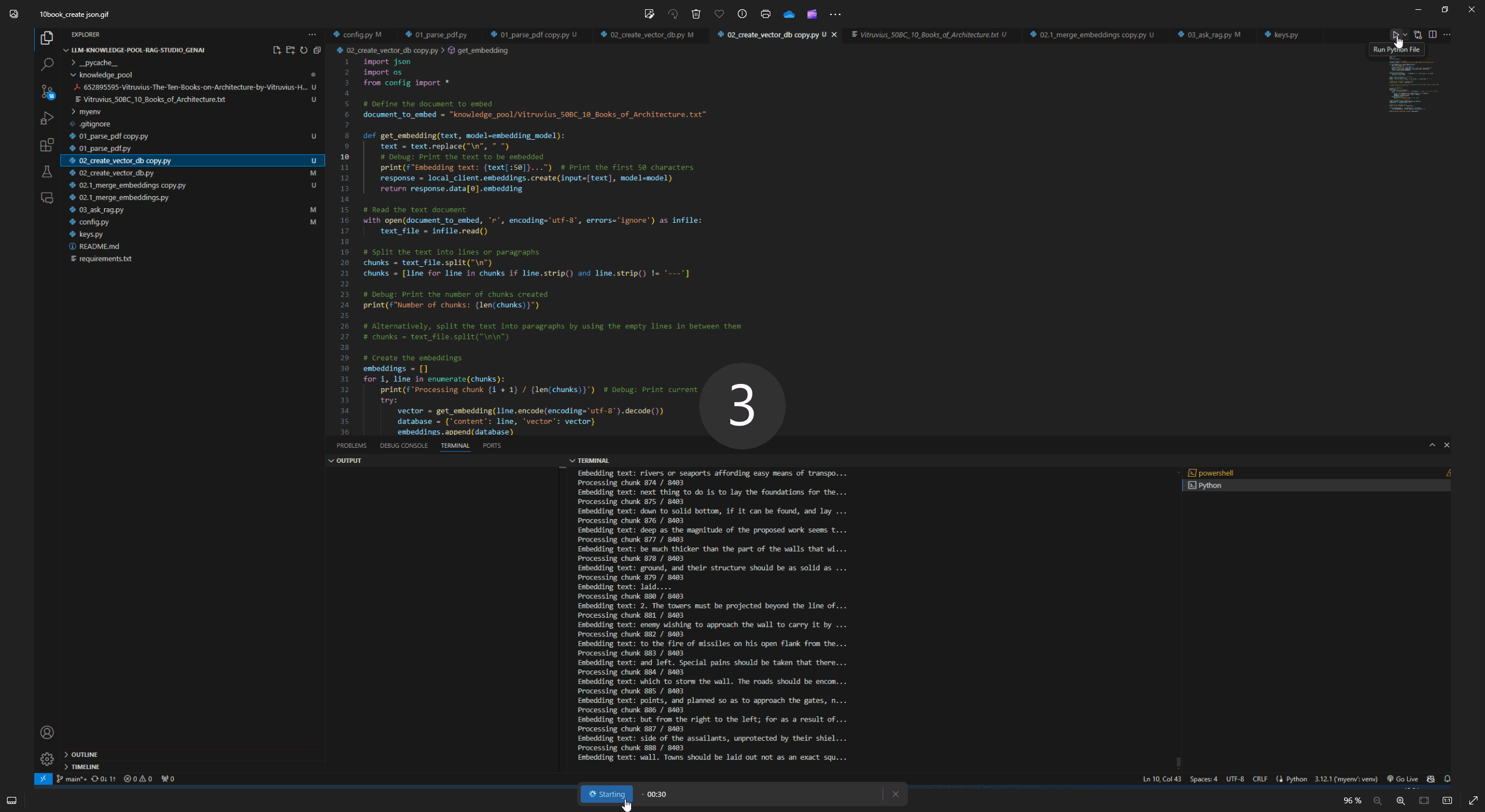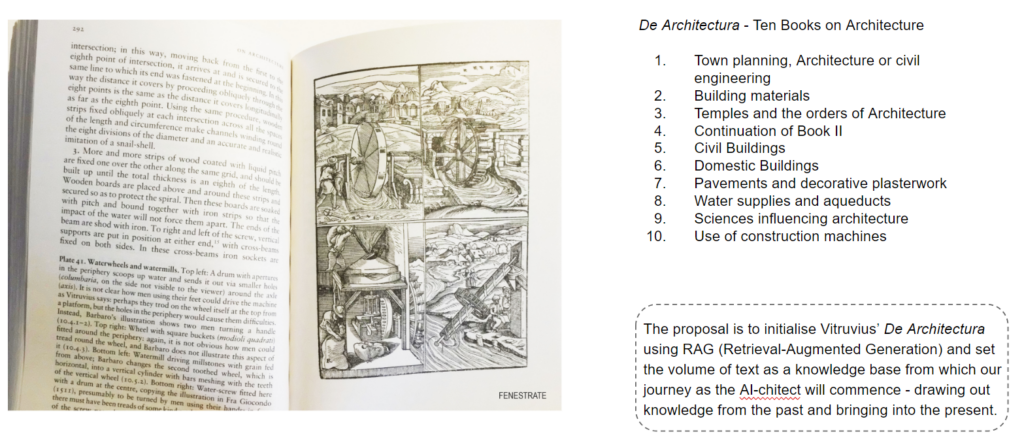A Self-Reflection on AI’s Replication and Innovation in Architecture
Our group explores the topic of AI-chitect, a self reflection on AI’s replication and innovation in architecture. The proposal is to initialise Vitruvius’ De Architectura using RAG (Retrieval-Augmented Generation) and set the volume of text as a knowledge base from which our journey as the AI-chitect will commence – drawing out knowledge from the past and bringing into the present.
The Shape of Knowledge
“Mankind is at a turning point in its history. The mass of data acquired is astounding. We need new instruments to simplify it, to condense it, or intelligence will never be able to overcome the difficulties imposed upon it or achieve the progress that it foresees and to which it aspires. “
Paul Otlet, Treaties on Documentation, 1934

Before the advent of information technology and of the World Wide Web, a project synthesized at once the need to concentrate all human knowledge in a single, accessible place, and the capacity of providing an efficient system to remotely and effectively retrieve all of this information. This project was the Mundaneum.
Conceived by two Belgian jurists, Paul Otlet (1868-1944), father of modern documentation and indexing techniques, and Henri La Fontaine (1854-1943), Nobel Peace Prize winner in 1910, the Mundaneum is considered as a precursor of network-based knowledge systems and of the Internet itself.
A massive center for documentation and communication, the Mundaneum aimed at hosting all human knowledge and facilitating worldwide sharing through the connection of universities, governmental institutions, and individuals. It was also meant to embody the idea of promoting peace among nations.
The information would have been classified on indexing cards under the Universal Decimal Classification, developed by Otlet, and the institutions would have merged shelves and printed documentation with screens and telephones allowing users from all over the world to ask questions. A first version of the project was indeed realized and hosted in 150 rooms of the Palais du Cinquantenaire in Mons, a location offered by the Belgian government.

The project would have given shape to democratic accessibility to collective memory and knowledge while materializing an exteriorized, collective mental process.Otlet contacted several architects to give form to its final project, notably Le Corbusier, who imagined it as a ziggurat-shaped monument close to Geneve,
From the exterior, the Mundaneum would resemble a sacred monument in the shape of a platonic pyramid.
Inside, it would feature a system of rooms which would become “a modernist theatre of memory.

The Shape of Knowledge in AI Age

The body of knowledge has transformed in the age of AI. One could ‘sample’ from different architectural examples to recreate one’s own. As can be seen in the example by Immanuel Koh.
One used to need to be present to learn from a Master Architect a style or methodology – but since the outcomes were readily available visually, using AI could generate simple iterations from that one image or prompt.
Debating art ethics
The perspectives of MRVDV and Hayao Miyazaki illustrate two distinct approaches to the integration of AI in creative fields. MRVDV embraces AI as a tool to enhance efficiency and creativity in architecture, seeing it as a way to offload repetitive tasks and focus on innovative design. In contrast, Hayao Miyazaki remains skeptical of AI’s role in animation, prioritizing the human touch and artistic integrity over technological advancements. These contrasting views highlight the diverse ways in which different creative disciplines perceive and utilize AI in their workflows.

Building Con(textual)versation

We decided to initialise Vitruvius’ De Architectura using RAG (Retrieval-Augmented Generation) and set the volume of text as a knowledge base from which our journey as the AI-chitect will commence – drawing out knowledge from the past and bringing into the present.
AI Architect V.S. Vitruvius

10 questions inspired by Vitruvius’ “Ten Books on Architecture,” crafted for an Architect using AI & Vitruvius himself:
- How do you define intelligence in your field and its importance to your work?
- How do you ensure that the principles of firmness, commodity, and delight (firmitas, utilitas, and venustas) are incorporated into your designs?
- What principles do you consider most important when aiming to enhance the quality of life through your work?
- What importance do you place on the understanding and use of proportion and symmetry in your architectural work?
- How can your field contribute to the emotional and psychological well-being of people?
- How do you approach the challenge of integrating functional and aesthetic elements in a single design?
- What are the key elements to consider when planning projects that promote sustainability and durability?
- In your opinion, how does your work influence human behavior and social interactions?
- What role do aesthetics play in your approach, and how do you balance beauty with functionality?
- How do you incorporate local culture and history into your projects or studies?

